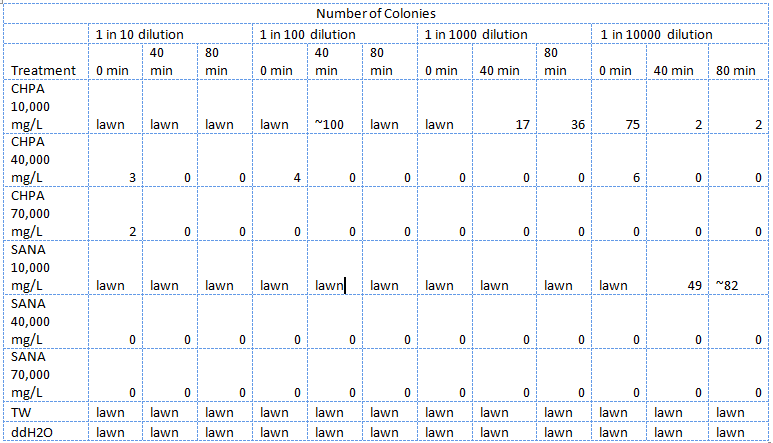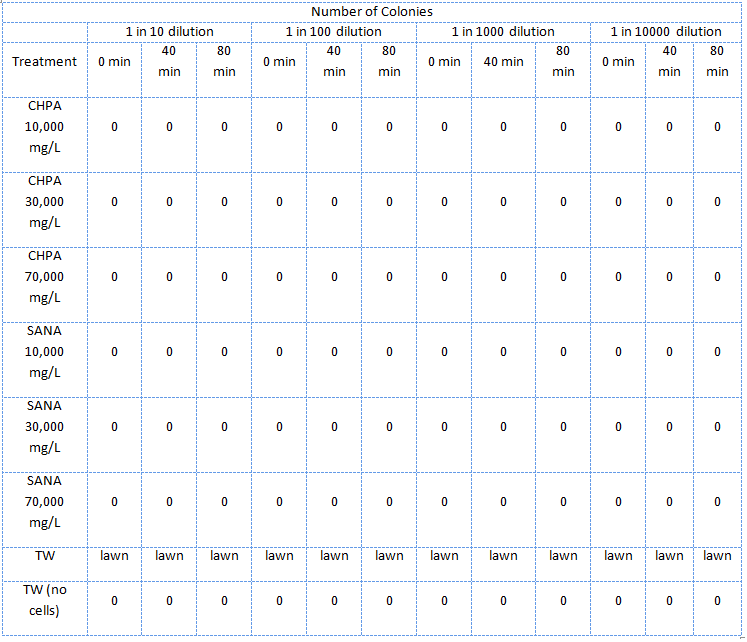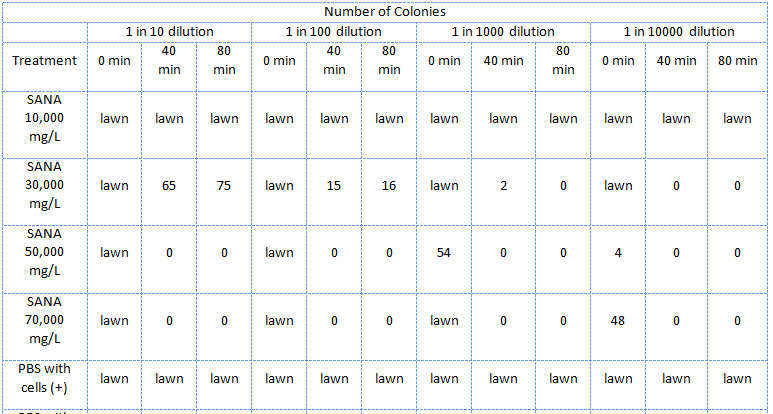Team:Calgary/Notebook/Journals/NA viability
From 2011.igem.org









Testing the survival and viability of E. coli in NAs

E. coli viability assays
In total three assays were carried out to assess the viability of E. coli in NAs. In order to see whether or not the E. coli could be used as the chassis for the electrochemical system we first had to figure out whether they could how well the E. coli survived in high concentrations of NAs. In the first one E. coli were treated with different concentrations of two types NAs in distilled water, tailings samples received from Dr. Gieg and distilled water. 1M NaOH was added to each f these samples bringing the pH to ~7.
In the second assay E. coli was similar to the first one except that the E. coli were treated with NA dilutions which were not pH adjusted.
In the third assay the NAs, this time only the mixture supplied by Sigma-Aldrich, were diluted in PBS (phosphate saline) buffer which kept the pH about 7.
Brief Methods:
E. coli cells were subcultured until log phase then divided into 2mL tubes and pelleted. The supernatant was removed and 2mL of the treatment was added and the cells were resuspended. Immediately at this point a 20uL samples of the mixtures were taken and diluted 10 times, 100 times, 1000 times, and finally 10 000 times. The diluted samples were then spotted on LB plates. The mixture was then placed in a 37 degree shaker to be removed when the time arose to repeat the above dilutions and plate spotting.
These plates were then incubated for the same amount of time and the number of colonies for each treatment and dilution were recorded.
Results:
Guide to the tables:
- SANA denotes Sigma-Aldrich Naphthenic Acids
- TW denotes tailings water
- CHPA denotes cyclohexane pentanoic acid
- "lawn" denotes massive growth on the plate which cannot be counted
Discussion
The E. coli cannot survive in NAs diluted in 10,000 mg/L in pure ddH2O (Table 2) but could survive in concentrations of up to 30,000 mg/L (though not well) when diluted in PBS buffer which kept the pH constant around 7 and also kept a balance of salts and minerals in the solution. The major conclusion that can be drawn from this data is that concentrations upwards of 10,000 or even 10,000, in the case of the NAs diluted in ddH2O, are not conducive to the growth or survival of E. coli. The E. coli did however appear to survive quite well in the tailings ponds water (Table 1 and Table 2), possibly due to the low concentration of NAs in the sample used.
In addition, recent experiences with NAs have indicated that they do not freely dissolve in water or buffer but form micelles separating themselves from much of the aqueous solution. Thus it is possible that the survival of E. coli in concentrations of up to 10,000 mg/L was due to the fact that the NAs may have separated from the rest of the solution and formed micelles. Further experiments will have to be done to determine whether this is the case. The concentration of NAs in tailings ponds may vary greatly between samples but are generally well below the concentrations tested in these assays. However, it is still safe option to use a species native to the tailings ponds in the reporter system since it would have a mechanism to survive in the concentrations of NAs found in tailings ponds.

 "
"









